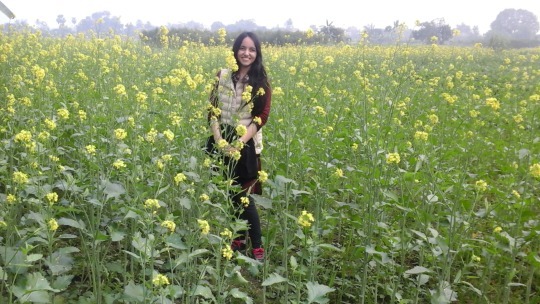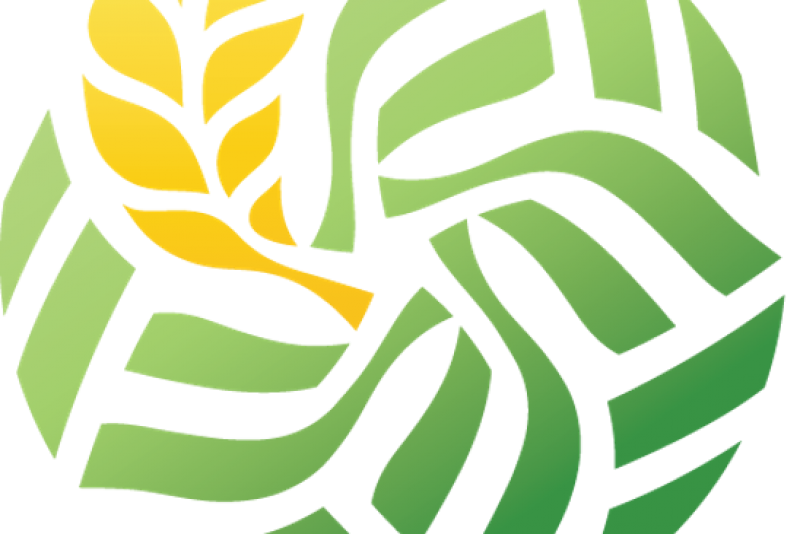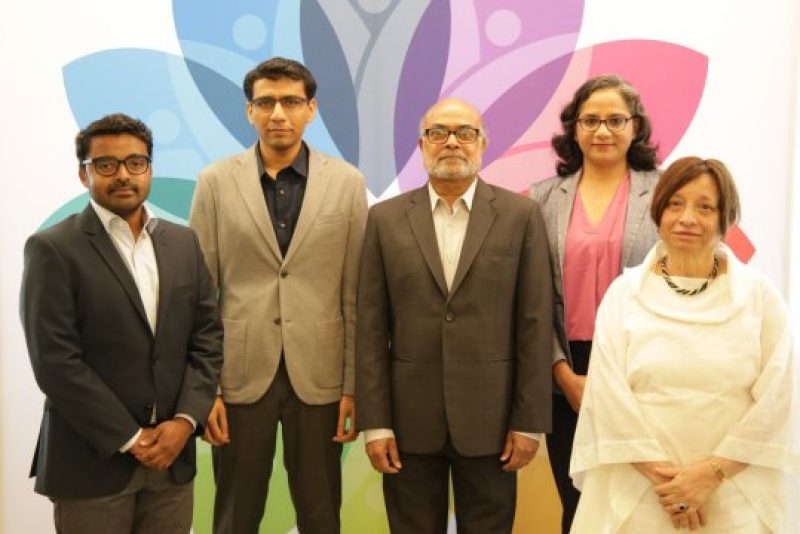Field notes: Essentials of enumerator training

I have been lodged in Mahrajganj, Uttar Pradesh for the past month and a half with the purpose of conducting the survey for two chapters of my doctoral thesis. For this study, I have had the gracious support of the entire TCI team and our partnering NGO Grameen Development Services (GDS).
This work has often been fast, chaotic, and fun, and also incredibly rewarding both personally and professionally. Some of the best experiences and perspectives are gained from the field. The new understandings can be thought-provoking, especially when they are learnt the hard way. As such, I was inspired to extract and formalize some of my key learnings and share my experience for the potential benefit of other researchers.
Go Local, Go Simple
Begin your search for the enumerators by going local. There is unequivocally no advantage of hiring people from afar, spending money on transportation and efforts on teaching them the local language.
Both of my surveys were held in winter. That meant shorter days and even shorter work-time. Compensate for any further delays and loss of time in the field by hiring people who live locally.
My selection criteria were very simple: local people who are literate (basic knowledge of Hindi and Bhojpuri), have some experience in conducting surveys, have a good work ethic, and could drive motorcycles or scooters to reach the villages. We received applications from 25 potential candidates and to my surprise, all of them fulfilled all the criteria. Obviously, I had to devise a new, effective filtering mechanism.
In the second round all the candidates were asked to:
- arrive on time,
- read the IRB approved consent statement, and
- drive a motorcycle GDS has in the office
This was a much better exercise as outcomes were objective. Only 17 people came on time, and only 6 could read the consent statement. The trepid glances we got after the enumerators saw the motorbikes were a reality check for us. We decided to hire a car instead. At the end of the day, we finalized the team of 6 enumerators ― a drastic reduction from the target of 10 and a recalculation of our expectations.
Seal the Deal
Once your team is finalized it is imperative to sign the contract. For my first study, the team had to survey 20 villages. Since each survey took 20 minutes per person, each enumerator was asked to cover at least 10 households in a day and hence a team of 6 enumerators was expected to cover one village per day.
The contract was signed for one month. Fortunately for me, GDS handled all the logistics. (Presence of a local NGO gives the researcher an edge. Leverage that advantage if you have it!)
Make provisions for accommodation, and whether the salary is inclusive of it or not. It is also customary for the employer to provide meals and refreshments; make appropriate arrangements for the same.
Hire Brilliant Supervisor(s)
A field supervisor will serve as an educator, mentor, facilitator, and evaluator. It is vitally important that your supervisor is an effective communicator and demonstrates leadership skills. Fortunately for me, GDS provided me an excellent supervisor. They also employed a graduate student to help with orientation and project support. She had a good work ethic and excellent PR management skills. We saved a lot of time by having her on the team. We hit the ground running since the first day. She stuck with me for the second survey, this time as a competent supervisor and a dear friend.

Enumerator training at the GDS office. (Payal Seth – standing) (Photo credit: Ranjana Kumari)
Talk, Paper, Nudges
Once you are done and dusted with the formalities and your supervisors understand their responsibilities well, launch into the enumerator training. Use the classic ice breakers, by introducing yourself and getting to know them first.
Then begin explaining the project, but be aware of where to draw the line.
For example, we were planning to undertake behavior change communication and construction toilets in the village once the baseline survey was done, but the enumerators were kept blinded to our treatments.
I also suggest that you do not bring out the tablets right away. Instead get a hardcopy of your survey (yes, use paper!) and distribute it to everyone. Go through each question. Make sure everybody is on board with the questions and structure.
Discuss how the question ought to be asked. Make it clear to the enumerators that they need to refrain from biasing the question by unnecessarily nudging the respondents and suggesting the answers implicitly.
Build Digital Literacy: the fabled-tablets
Enumerators were informed about the use of tablets in the survey before-hand but we had to compromise on the digital literacy, because, um, there wasn’t any. Raised eyebrows and furtive glances welcomed the tablets in the room. One of the enumerators chimed in by claiming that the cost of this tablet would be equal to two months of his salary. Hence, you need to make sure that you get your tablet back at the end of the day. Make it abundantly (and yet not so terrifyingly) clear about the gravity of the loss of this device and the replacement costs. We had numbered our tablets and assigned each specific tablet to an enumerator and instructed them to return it to the supervisor at the end of the day.
To begin familiarizing them with the tablets, keep it simple at first and explain the two or three buttons’ purpose. Make them feel comfortable with swipes, the pressure of touch and the keypad. Teach them the function of all keys and specially the space and back-space key. Make sure they understand each option in the app.
We experienced that very often one of them will click on a random button or proceed with an untimely swipe. That’s fine! It’s all part of the learning process. While new enumerators are bound to make all sorts of mistakes, it is also expected that under your patient supervision, they will learn how to get back to their questionnaire and will be prepared for many, many more (un)anticipated scenarios.

In time, the enumerators became adept with tablet-based survey technology. (Photo credit: Ranjana Kumari)
Practice, Practice, Practice
Everyone was really excited when we started using the practice form! They were amazed at their ability to operate the tablets with ease. Our practice form was a short 2-minute form, which everyone was required to fill till the end. We took turns around the table and made sure that they understood how to fill their name (text response), age (numeric response), gender (single response) and what mode of transportation they used to come to the office (multiple responses).
We then practiced for 2 days straight with our study questionnaire. We conducted self-interviews, partner-interviews, interviews with me and the supervisor, and even practice interviews with the staff at GDS. Later, we compared the responses recorded across enumerators and addressed discrepancies as needed.
This exercise also turned out to be very beneficial for me as I fine-tuned my questionnaire constantly over these two days. The enumerators really grew in their confidence and skills. They were ready to head to the field.
Pilot Test
Despite several insightful practice sessions, commencing the work on field will offer new, challenging surprises. Therefore, to avoid contaminating your project villages, always choose a village that is different from your study village for the pilot test.
I was pleased to see that almost all my enumerators were comfortable introducing themselves and could explain the purpose of this survey without any hitch. Our field supervisor and I monitored each enumerator the first time he or she conducted the survey, and to my delight, it went smoothly. They were kept under strict supervision for the next 3 days.
The varying attitude and reception of each respondent was the source of our daily dose of discussion, humor, learning and improving. Everyone had to deal with a few people who simply went quiet in the middle of the survey, or who were exceptionally inquisitive and instead began interviewing my enumerators. We would regularly debrief and reflect over chai breaks in order to discuss how each of them dealt with these situations. Advice from the rest of the team was welcomed.

Supervising and observing as the enumerator conducts her first survey. (Photo credit: Ranjana Kumari)
There were other key lessons that these three days of pilot testing taught me:
Logistics:
- keep power banks in the field (never give your enumerators a ready-made excuse to come-back empty handed),
Survey design and tablet use:
- make it binding to answer all the questions in the software,
- keep spell check in the key-pad off,
- include the time to begin and end the interview in the form (it’s exceptionally useful for data monitoring later).
Training:
- train more enumerators than you require (we had to fire one of them after a week),
- train your supervisor twice (once before and once during the enumerator training).
Lead by Example
Project your best self when you are with your precious team in the field. Model the character and behavior you wish to see from your team. Make sure everybody feels that they have a stake in the project. Take good care of them. Eat with them. Give them constant assurance that they could approach you with any problem. If someone does approach you, then genuinely put in your best effort to find solution for the same. After all, treating your people with respect not only gets you respect; it helps create a cohesive and productive team.
Concluding Thoughts
My biggest take-away from this incredible journey is that your enumerators need not be computer scientists. Your supervisor doesn’t need to have elaborate data collection experience. A well-structured training and persistent practice can overcome all potential glitches. More than any skill, good natured people with the spirit of teamwork and a good work ethic will facilitate smooth data collection. A congenial and accessible supervisor can hold the team together. The quality of your data is a direct function of the cohesiveness of the team. Compromise on the latter and the former will undeniably suffer.

Our complete team: 6 enumerators, field supervisors, partners from GDS and myself. Thank you all for your hard work and dedication!
By Payal Seth
Payal Seth is a second year Ph.D. student in the field of Applied Economics and Management at the Dyson School. As a TCI Scholar, her fieldwork focuses on linkages between sanitation and nutrition. Working with the partner NGO Grameen Development Services, Payal is examining the behavior change methodology known as Community-led Total Sanitation which stimulates a collective sense of disgust and shame among community members as they confront the crude facts about mass open defecation practices and its negative impacts on the entire community.




